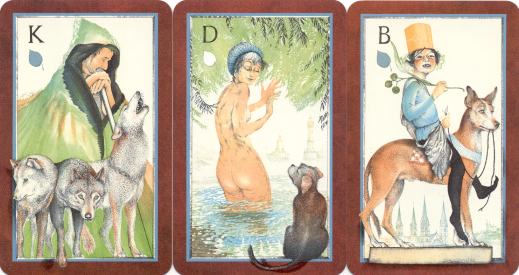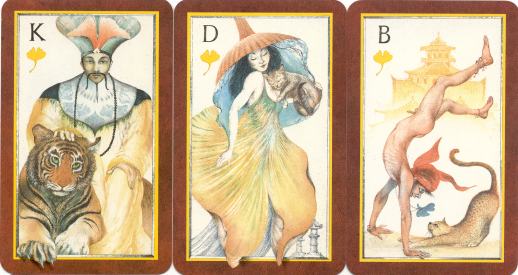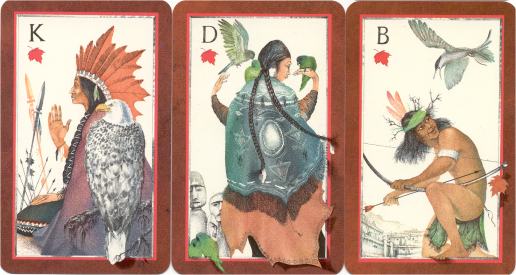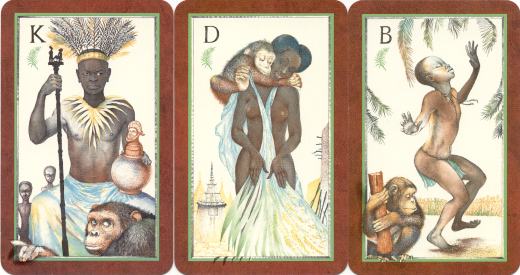
-1-
CHRISTIAN MISCHKE
"The world is a game of cards - in these cards is the world"
Christian Mischke was born in Grünberg, Silesia, in 1944.
Between 1965 and 1973 he studied art. First at the Academie of Nürnberg and
from 1969 in Munich.
After a stipendium at the Art Academy of Vienna, Austria, by Rudolf Hausner he settled
as a free artist in Munich.
He has had expositions in Berlin, Amsterdam,
Rome, Vienna and Rio de Janeiro, but also in the Museum of Modern Art in New
York and the Bibliotheque Nationale in Paris. His work can be seen in musea all
over the world.
Christian Mischke is a graphic artist with a definite favour for
(colour) etching. The cards in this deck are the result of over 3 years of
work. Between 1995 and 1998 he created 55 colour etchings, each measuring 154 by 93
mm, and printed them, using 3 or sometimes 4 copperplates.
The original
etchings were lithographed by Repro-Team of Munich and 2.200 copies of the deck
were produced by the Nürnberger Spielkarten Verlag in 1998.

The man who had commissioned half of the total printrun, Christoph Sieber-Rilke, wanted the cards to have an appeal all over the world. The way in which Christian Mischke has appreciated this preference, shows that the artist must have (acquired) some historical knowledge of playing cards. He chose a "4 continents" context and didn't use the German or the French suitcolours, but created new suitcolours.
Mischke has used the leaf of a tree, typical for each continent, as suitcolour.

Europe is represented by the shimmering blue linden leaf, Asia by a yellow gingko leaf,

America by a red maple leaf and Africa by a green palm leaf.

The use of 4 continents to be
represented in the suits became popular in the second half of the 19th
century.
The use of unusual symbols has an even longer history. Already in the 15th century special decks were made by artists, often
commissioned by a high ranking or wealthy person, that used animals, hunting
objects or different
coats of arms as "suitcolours".
And when we're talking
colours...........the artist chose the following colours for the suitsymbols:
blue, green, yellow and red. So card puritans may call this a "no
revoke" deck too!
But there are also other interesting
features in this deck.
Not only the leaves
represent each continent. The courts also show a typical animal for each
continent. European dogs, Asian cats, American birds and the African chimpanzee are depicted in a playful way on the Jacks and in a caressing way on the
Queens. On the Kings the animals are presented as a dignified symbol of the
power of the King.
Another feature is the return of the leaves in the total
design of each of the courts. On the Kings their head is embellished, protected
or hidden by the suit's leaf. On the Queens the shapes of the leaves are repeated in their
robes and the Jacks wear them as an amulet.
Although the graphic technique isn't new, the most interesting -in my opinion- feature on these courts is how consistently each of the designs seems to be put in contact with the real world. The designs are set in a frame (colour matches that of the suit) that -by use of perspective and shadowing- has become a rectangular window in a thin, dark brown wall, through which we can look at the depicted continent and it's inhabitants. By letting some elements of the design overlap the frame, they seem to be part of our world at the same time: the artist's intermediaries between his world and ours.......
"The world is a game of cards - in these cards is the world"
-1- -2-